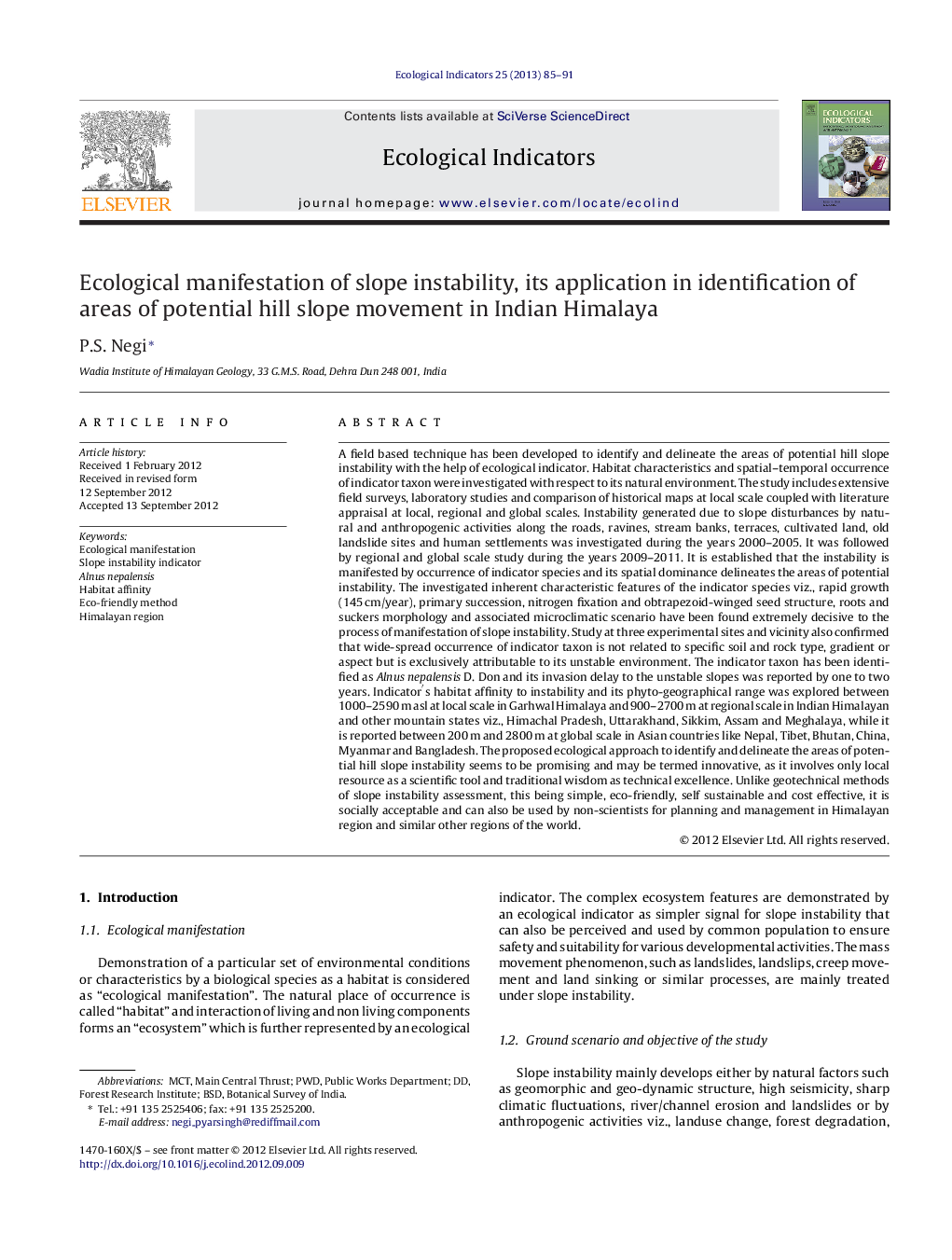| کد مقاله | کد نشریه | سال انتشار | مقاله انگلیسی | نسخه تمام متن |
|---|---|---|---|---|
| 4373588 | 1617175 | 2013 | 7 صفحه PDF | دانلود رایگان |

A field based technique has been developed to identify and delineate the areas of potential hill slope instability with the help of ecological indicator. Habitat characteristics and spatial–temporal occurrence of indicator taxon were investigated with respect to its natural environment. The study includes extensive field surveys, laboratory studies and comparison of historical maps at local scale coupled with literature appraisal at local, regional and global scales. Instability generated due to slope disturbances by natural and anthropogenic activities along the roads, ravines, stream banks, terraces, cultivated land, old landslide sites and human settlements was investigated during the years 2000–2005. It was followed by regional and global scale study during the years 2009–2011. It is established that the instability is manifested by occurrence of indicator species and its spatial dominance delineates the areas of potential instability. The investigated inherent characteristic features of the indicator species viz., rapid growth (145 cm/year), primary succession, nitrogen fixation and obtrapezoid-winged seed structure, roots and suckers morphology and associated microclimatic scenario have been found extremely decisive to the process of manifestation of slope instability. Study at three experimental sites and vicinity also confirmed that wide-spread occurrence of indicator taxon is not related to specific soil and rock type, gradient or aspect but is exclusively attributable to its unstable environment. The indicator taxon has been identified as Alnus nepalensis D. Don and its invasion delay to the unstable slopes was reported by one to two years. Indicator's habitat affinity to instability and its phyto-geographical range was explored between 1000–2590 m asl at local scale in Garhwal Himalaya and 900–2700 m at regional scale in Indian Himalayan and other mountain states viz., Himachal Pradesh, Uttarakhand, Sikkim, Assam and Meghalaya, while it is reported between 200 m and 2800 m at global scale in Asian countries like Nepal, Tibet, Bhutan, China, Myanmar and Bangladesh. The proposed ecological approach to identify and delineate the areas of potential hill slope instability seems to be promising and may be termed innovative, as it involves only local resource as a scientific tool and traditional wisdom as technical excellence. Unlike geotechnical methods of slope instability assessment, this being simple, eco-friendly, self sustainable and cost effective, it is socially acceptable and can also be used by non-scientists for planning and management in Himalayan region and similar other regions of the world.
► Slopes instability is manifested by ecological indicator in Himalayan Mountains.
► Ecological indicator can be used to identify and delineate unstable slopes.
► Present studies enable non-specialists to recognize safer places for societal use.
► Present technique is cost-time effective, self-sustainable, eco-friendly.
Journal: Ecological Indicators - Volume 25, February 2013, Pages 85–91